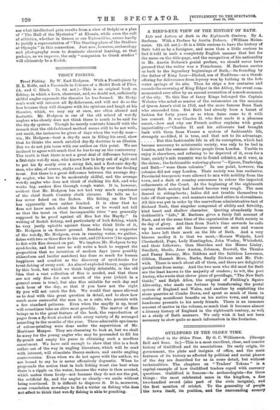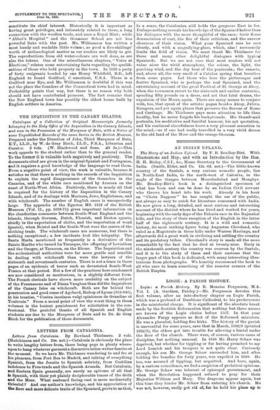GUILDFORD IN THE OLDEN TIME.
Guildford in the Olden Time. By G. C. Williamson. (George Bell and Sons. 5s.)—This is a most excellent, clear, and concise history of Guildford and its associations. Its early origin, its government, the plate and insignia of office, and the main features of its history as affected by political and social phases of the day are described for us in some detail, but without technicalities. The chapters on " Traders' Tokens " is a capital example of how Guildford traders coped with currency questions. Guildford is famous—to archaeologists—for three things : the most celebrated mace in the kingdom, a fine two-handled sword (also part of the civic insignia), and the first mention of cricket. To the generality of people the town itself, its position, and the surrounding scenery constitute its chief interest. Historically it is important as having great privileges, and intimately related to these, a long connection with the woollen trade, and once a Royal Mint; while "Abbot's Hospital" and the Grammar School are not less powerful links with the past. Mr. Williamson has written a most handy and readable little volume, as good a five-shillings' worth of archaeological matter as our readers are likely to get. The reproductions from old water-colours are well done, as are also the tokens. One of the miscellaneous chapters, " Votes at Elections," relates some entertaining facts regarding the qualifi- cations of those who held property in the town. In 1639 a party of forty emigrants headed by one Henry Whitfield, B.D., left England to found Guilford, C,,nnecticut, U.S.A. There is a Guilford near Rye, and Mr. Williamson is doubtful if this was not the place the founders of the Connecticut town had in mind. Probability points that way, but there is no reason why both should not have contributed pioneers. The fact remains that the New England town has possibly the oldest house built by English settlers in America.



















































 Previous page
Previous page